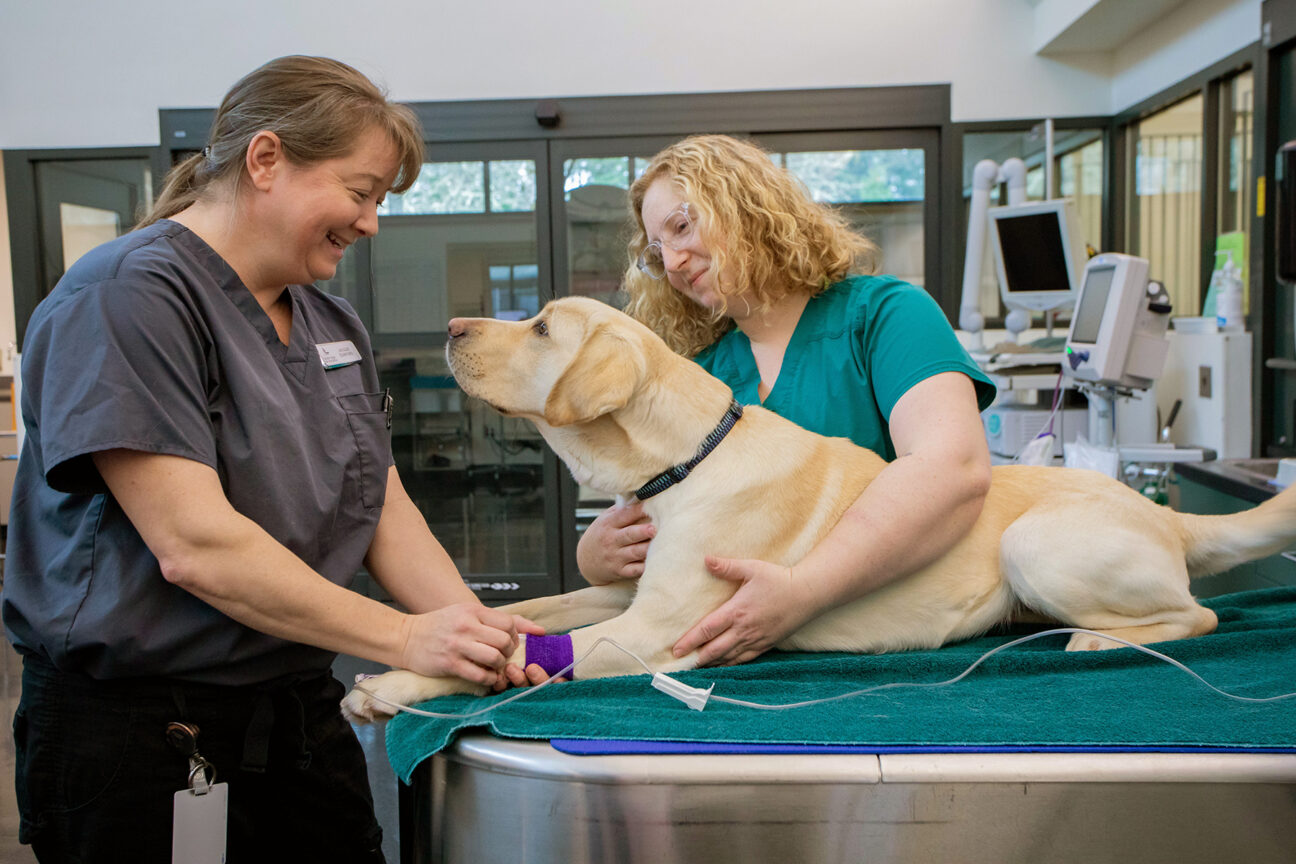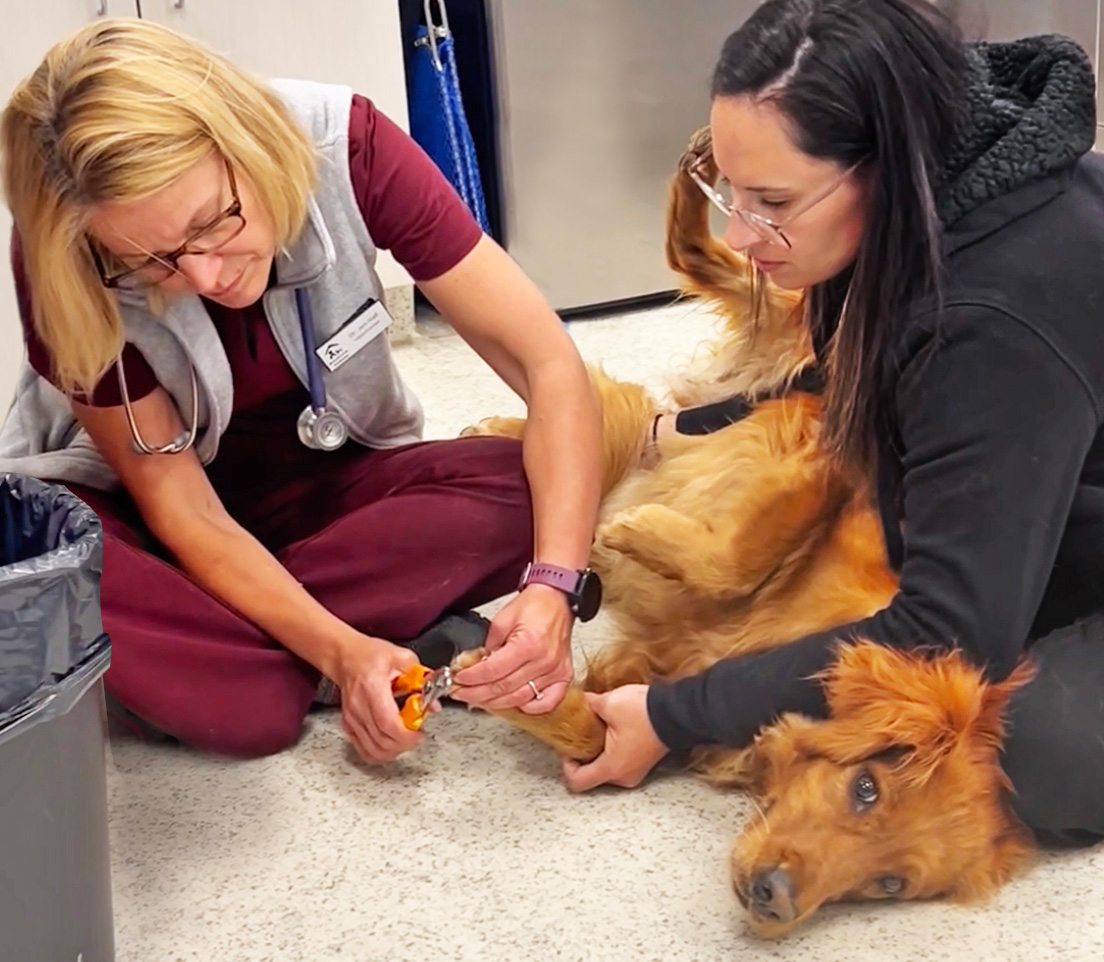Choosing the Best Veterinary Clinic for canine tplo surgery in Your Area
Choosing the Best Veterinary Clinic for canine tplo surgery in Your Area
Blog Article
Everything About Veterinarian Surgical Procedure: Recognizing the Significance of Professional Treatment for Your Pets
Vet surgical procedure is a vital element of pet healthcare. It incorporates various treatments, from regular elective surgeries to immediate treatments. Comprehending the intricacies of these surgical procedures can aid pet owners make notified choices. The preparation, implementation, and healing stages are vital for guaranteeing the well-being of animals. With correct understanding, owners can browse the intricacies of vet care. What aspects should be thought about prior to a family pet undergoes surgical treatment?
Sorts Of Vet Surgeries
When a family pet requires medical intervention, recognizing the numerous sorts of veterinarian surgical procedures can aid pet owners make informed choices. Veterinary surgeries can be broadly classified into 3 major kinds: elective, immediate, and emergency surgical procedures. Elective surgeries, such as spaying or neutering, are planned treatments that are not quickly serious. Urgent surgical treatments, like those for international body elimination, must be executed quickly however are not serious in the moment. Emergency surgeries, such as those attending to severe injury or inner bleeding, are critical and need prompt attention.Additionally, surgical treatments can differ in intricacy, ranging from minimally invasive laparoscopic procedures to a lot more considerable open surgical treatments. Each kind of surgery lugs its own dangers and recuperation processes. Recognizing these categories enables family pet proprietors to involve in significant conversations with vets, causing better outcomes for their beloved pets.
Getting ready for Your Pet's Surgical treatment
Planning for an animal's surgical treatment entails a complete checklist to assure all basics are covered. Efficient interaction with the vet is important for understanding the procedure and any type of essential pre-operative actions - tplo surgery. Additionally, having clear post-operative treatment directions will certainly help owners give the very best assistance for their recovering pet dogs
Pre-Surgery Checklist Essentials
Guaranteeing a smooth surgical experience for an animal calls for cautious preparation and interest to detail. A pre-surgery checklist is vital for animal owners to adhere to. Validating the scheduled surgical treatment day and time is important. Proprietors ought to additionally verify that their animal has actually not eaten according to the veterinarian's instructions, typically for 8-12 hours before surgery. Gathering essential medical records, including vaccination background, is very important for the veterinarian's testimonial. It is additionally a good idea to prepare a comfy area in your home for the animal's healing after surgical treatment. Owners need to have a plan for transport to and from the vet facility, making sure that the animal is protected and comfortable throughout the journey. Adhering to these actions can significantly enhance the medical experience.
Connecting With Your Vet

Effective interaction with the vet is crucial for a successful medical experience for animals. Owners need to be prepared to review their pet's medical background, consisting of any pre-existing problems, medicines, and allergic reactions. This information helps the vet analyze threats and tailor the medical strategy appropriately. Furthermore, pet dog proprietors must ask inquiries pertaining to the treatment, anesthetic, and expected outcomes to assure they completely recognize the procedure. Making clear any questions can ease stress and anxiety for both the pet and the owner. It is likewise important to connect any kind of behavior changes or concerns observed in the pet leading up to the surgical procedure. Ultimately, clear discussion promotes count on and cooperation, guaranteeing that animals receive the best possible treatment during their surgical journey.
Post-Operative Treatment Instructions
After reviewing the surgery with the veterinarian, pet owners ought to concentrate on post-operative care guidelines to help with a smooth recovery for their animals. These instructions typically include keeping an eye on the surgical website for indicators of infection, such as redness or discharge. Family pets might need to be maintained calm and constrained to avoid too much activity that can disrupt recovery. Discomfort monitoring is vital, so owners should comply with the vet's guidance on administering medicines. In addition, nutritional limitations may be recommended to avoid stomach trouble. Routine follow-up visits are essential to ensure correct healing and address any kind of worries. By adhering to these post-operative care instructions, family pet owners can considerably add to their family pet's healing and general health.
The Surgical Process Explained
The medical process for family pets encompasses essential steps that assure their security and healing. Pre-surgery preparations are crucial for reducing threats, while post-operative treatment guidelines play a vital function in promoting recovery. Recognizing these parts assists pet dog owners browse the medical experience a lot more successfully.
Pre-Surgery Preparations
Prior to a family pet undergoes surgical treatment, numerous important prep work need to occur to guarantee a safe and successful treatment. Initially, a thorough vet evaluation is necessary to evaluate the pet dog's total health and wellness and identify any kind of prospective threats. This may consist of blood tests, imaging, or other diagnostics. The vet will likewise discuss anesthetic alternatives tailored to the animal's particular requirements. Additionally, pet proprietors are usually advised to withhold food and water for a specified time prior to surgical procedure to lessen the risk of issues during anesthesia. It is necessary for owners to give a complete case history, consisting of any type of medications or allergic reactions, guaranteeing the medical group has all needed info. Proper interaction and adherence to pre-surgery standards can significantly improve the outcome of the treatment.
Post-Operative Care Guidelines
Appropriate post-operative treatment is vital for ensuring a pet dog's healing following surgery. After the treatment, pet dogs ought to be monitored very closely for any type of indicators of problems, such as extreme blood loss, swelling, or unusual habits. It is essential to comply with the vet's guidelines pertaining to medicines, consisting of pain reducers and prescription antibiotics. Pet dogs should be maintained in a quiet, comfortable atmosphere to reduce stress and promote recovery. Restricting task is important; short, leashed walks may be necessary, yet leaping or running must be prevented. Regular follow-up appointments need to be set up to examine the healing procedure. Furthermore, the medical website must be maintained tidy and completely dry, with any signs of great site infection reported to a vet quickly. Adhering to these guidelines boosts recovery end results.
Anesthetic and Discomfort Administration
Efficient anesthetic and discomfort administration are crucial elements of vet surgical procedure, guaranteeing that animals continue to be comfortable and secure throughout the procedure. Vets assess each family pet's specific needs, taking into consideration aspects such as age, weight, wellness condition, and the kind of surgical treatment being performed.Anesthesia methods normally consist of a combination of pre-anesthetic medications, induction representatives, and inhalant anesthetics, permitting specific control over the animal's level of consciousness. Surveillance throughout surgical treatment is crucial; vets continuously observe vital indicators to deal with any potential difficulties promptly.Pain administration strategies might include opioids, non-steroidal anti-inflammatory drugs (NSAIDs), and anesthetics, customized to the animal's particular circumstance. This multifaceted approach aids reduce discomfort and advertises a smoother surgical experience. By prioritizing reliable anesthesia and discomfort management, vet professionals improve the overall well-being of pets going through medical treatments, ensuring they obtain the highest possible standard of care.
Post-Operative Care and Recovery
Following surgical procedure, the focus shifts to post-operative care and healing, which is important for making sure a pet dog's safe return to typical activities. Throughout this duration, animals call for a peaceful, comfy setting to aid healing. Owners should closely monitor their pet dogs for any kind of indications of pain or uncommon behavior.Veterinary guidelines frequently consist of particular instructions connected to medication management, injury care, and nutritional modifications. It is important to stick to these suggestions to reduce difficulties and advertise healing. Family pets might need to be restricted from energetic tasks, such as running or leaping, during their recovery period (emergency vet near me).Regular follow-up consultations with the veterinarian permit for monitoring of the family pet's progress and prompt adjustments to the care strategy. Supplying psychological assistance and friendship can also boost a pet's recovery experience, helping to reduce stress and stress and anxiety. Overall, thorough post-operative treatment plays a significant role in accomplishing an effective healing
Recognizing Difficulties After Surgical Treatment
How can family pet owners identify complications after surgical treatment? Recognition of specific indicators is important for making certain the health of animals throughout recuperation. Usual signs include extreme swelling, redness, or discharge at the medical site, which might represent infection. Furthermore, relentless pain, indicated by whimpering or hesitation to relocate, should prompt instant focus. Modifications in cravings or water intake can additionally indicate complications; a decline in these behaviors might signal pain or distress.Moreover, family pet proprietors should check their animals for any kind of unusual behavior, such as sleepiness or difficulty breathing, as these can be signs of significant concerns. Throwing up or diarrhea following surgery may need urgent veterinary evaluation. Recognizing these complications early can considerably affect a pet dog's recovery process, highlighting the significance of watchfulness and punctual communication with a veterinarian for any worrying symptoms.
The Duty of Veterinary Professionals in Surgical Care
Vet specialists play an essential role in making sure the security and success of surgical procedures for pet dogs, especially complying with surgical treatment when keeping track of and care are paramount. These specialists consist of veterinarians, vet professionals, and support team, all of whom contribute specialized cat vet skills to the surgical process.Before surgical procedure, vets conduct thorough assessments to analyze the animal's health, making sure that any type of underlying problems are handled. During the procedure, click this site the medical group provides anesthetic, maintains clean and sterile settings, and checks crucial indicators, very important for reducing risks.Post-operative care is equally considerable; veterinary experts observe for difficulties, take care of pain, and guide owners on recuperation practices. Their proficiency enables them to acknowledge very early signs of distress or infection, guaranteeing prompt intervention. Inevitably, the collaborative efforts of vet professionals in surgical care foster a risk-free setting, promoting the health of pet dogs throughout the surgical trip.

Frequently Asked Inquiries
How Do I Choose the Right Veterinary Surgeon for My Pet?
Choosing the right veterinary specialist entails investigating certifications, reading testimonials, and evaluating the clinic's environment. It is necessary to review the surgeon's experience with particular procedures and their interaction design when deciding.
What Are Usual Misconceptions About Vet Surgeries?
Common misunderstandings regarding veterinarian surgical procedures consist of beliefs that they are always high-risk, unnecessary, or only for emergency situations. Many animal proprietors ignore the benefits of preventative treatments and the skill involved in veterinary surgical treatment.
How Much Will My Animal's Surgical treatment Cost?
The price of a pet dog's surgical treatment can differ considerably based on variables such as the kind of treatment, the veterinarian's experience, and geographic place (animal emergency care bellingham). Typically, expenses range from a few hundred to a number of thousand dollars

Can My Pet Dog Consume Prior To Surgical Treatment?
Before surgical procedure, it is normally encouraged that animals avoid eating for a certain period. This fasting helps lower the danger of issues during anesthesia. Owners ought to consult their veterinarian for accurate directions tailored to their family pet's demands.
What if My Pet Dog Has Pre-Existing Wellness Conditions?
When a pet has pre-existing health conditions, it's essential for the veterinarian to examine these aspects prior to surgical procedure. This assessment guarantees proper precautions are taken, minimizing threats and maximizing the pet dog's overall safety during the treatment.
Report this page